The Fallas in Valencia are just around the corner and maybe you have not yet figured out how best to manage your time to ensure that you see all the main monuments and events? The Muchosol team would like to help you out by suggesting six routes so as not miss out on anything during the biggest festival of Valencia.
Route 1
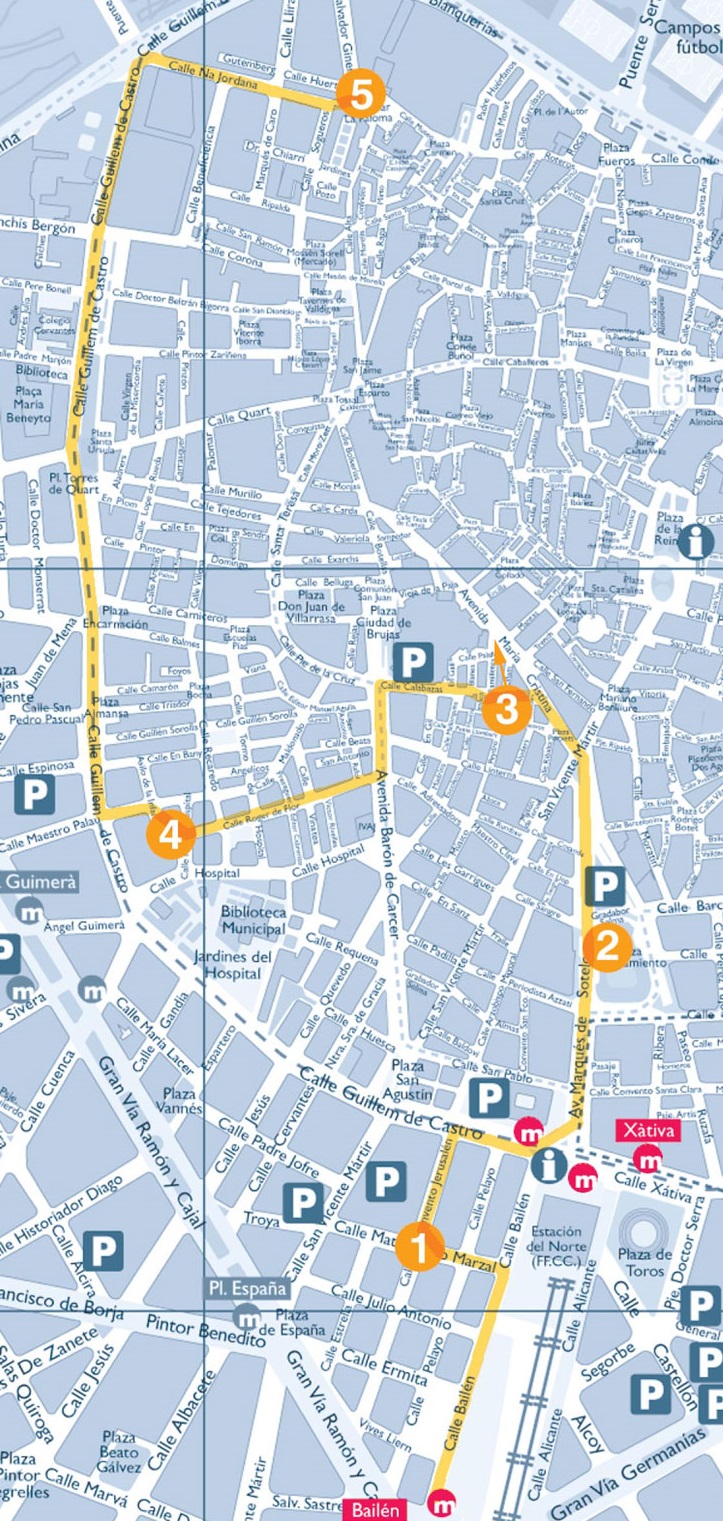
Starting at the Estación del Norte (North Train Station), here you are right in the city centre of Valencia where you will already find at least 5 impressive fallas (monuments/sculptures) to take a look at.
Firstly, and just a short distance away from the station, you will find the Convento Jerusalén – Matemático Marzal Falla, part of the specialised category and fourteenth time prize winner for it’s link to history.
Next head to the Plaza del Ayuntamiento and it’s falla. In this square everyday at 2pm you can witness the mascletà: a pyrotechnic display of noise lasting for a few minutes which shakes the whole city.
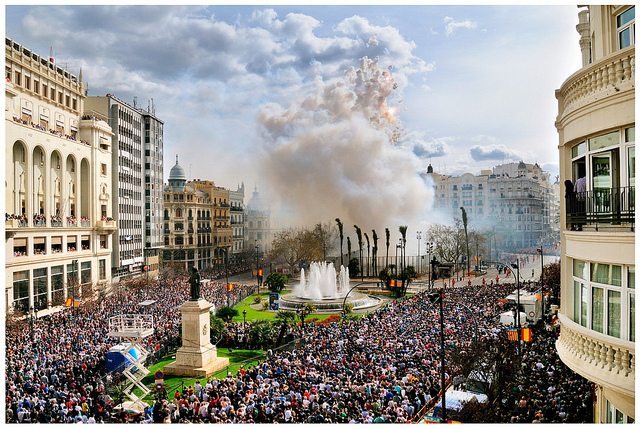
We continue our route to the Plaza de la Merced, where the 143 year old Plaza de la Merced Falla, is displayed. Then, once we have crossed the avenida Barrón de Cárcer, we arrive in the Plaza del Pilar with its falla, the winner of the most first place prizes in the specialised category of Valencia.
And finally, we exit the square via Calle Guillem de Castro reaching the former riverbed passing the Torres de Quart. Once there, you will find the Plaza Na Jordana Falla, which has received no less than 12 first place prizes in the specialised category for presenting history.
It should be noted that if you pass through the centre on 17th and 18th March (normally from 4pm to 2am) it is sure you will come across numerous falleros* parading in the streets to pay tribute to the patron of Valencia: la Virgen de los Desamparados (the Virgin of the Defenceless). One of the most symbolic activities of the Fallas festival is the offering of flowers to the replica of the Virgin of the Defenceless which is put in place in front of the Basílica.
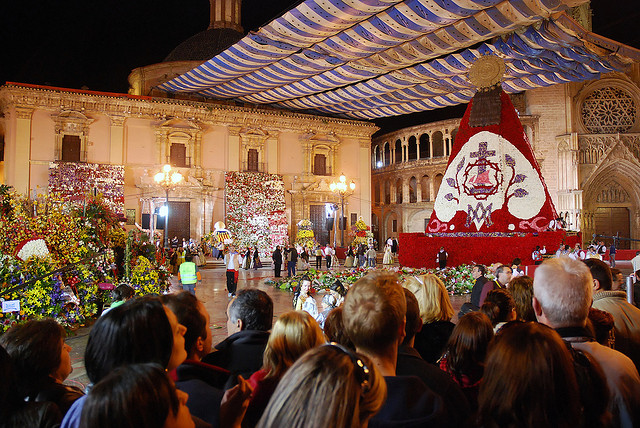
Route 2
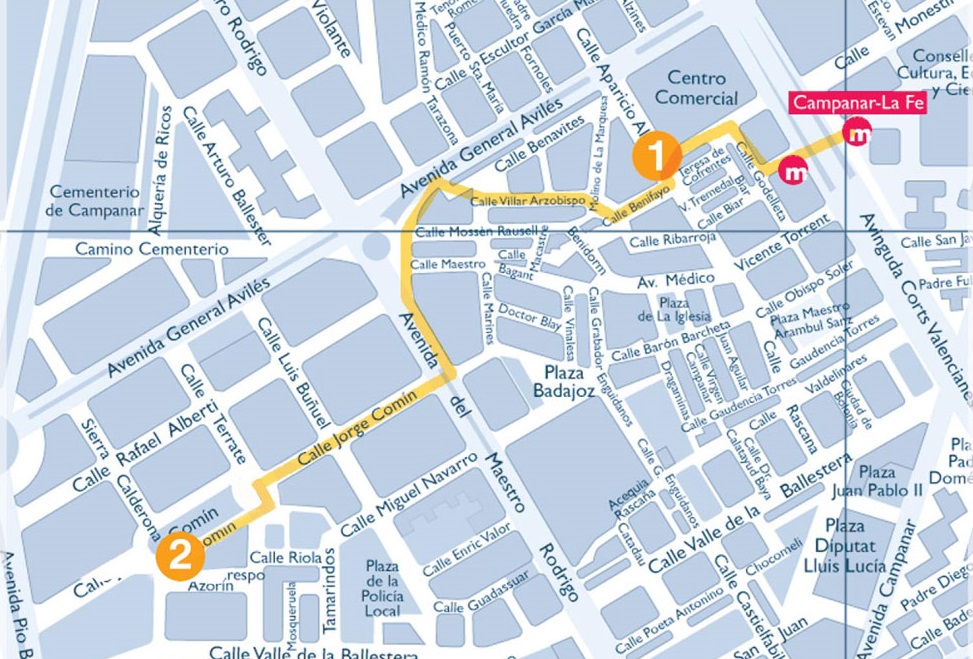
We are moving away from the city cente to follow this route and see two fallas of the specialised category and also the most impressive. It’s best to take line 1 on the metro and get off at the stop called Campanar. Once there, you will find the Monestir de Poblet – Aparició Albiñana Falla, at the crossroads of these two roads. A second important falla can be found just a few metres away from the first by crossing the avenida del Maestro Rodrigo. This is the Pediatra J. Comín – Sierra Calderona Falla (also known as the Nou Campanar Falla), which is special as it’s the newest Falla, in fact, it was set up in 2003 and has already received seven first place prizes! (2004-2009 consecutively)
Route 3
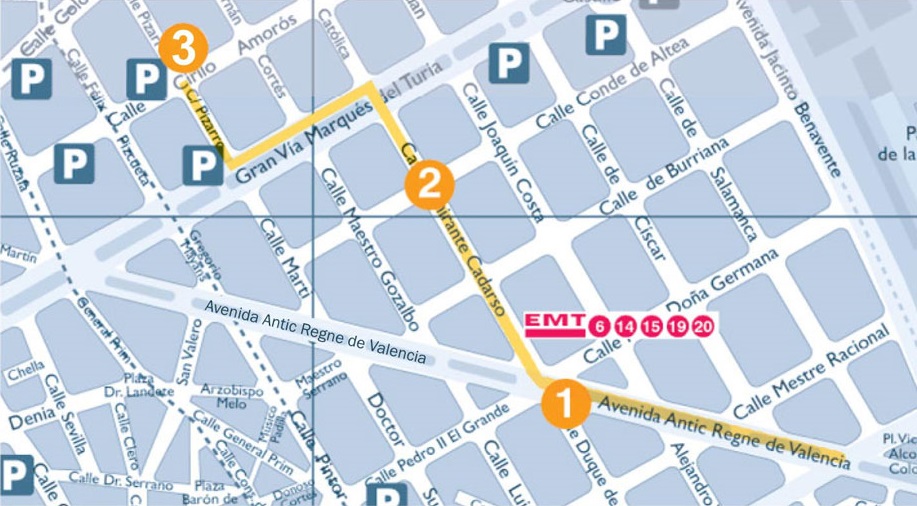
Another area which is worth strolling through for the fallas sculptures, situated near to the Gran Vía Marqués del Turia: between the city centre and the Ruzafa neighbourhood, is the Conde Altea neighbourhood. A lively area during the festival when it comes to the nightlife.
At the same crossroads of the avenida del Antic Regne de Valencia and the calle Duque de Calabria, you will come across the Antiguo Reino de Valencia – Duque de Calabria Falla. And if you cross the road the Almirante Cadarso – Conde Altea Falla is hung up high. You can’t possibly miss it!
Route 4
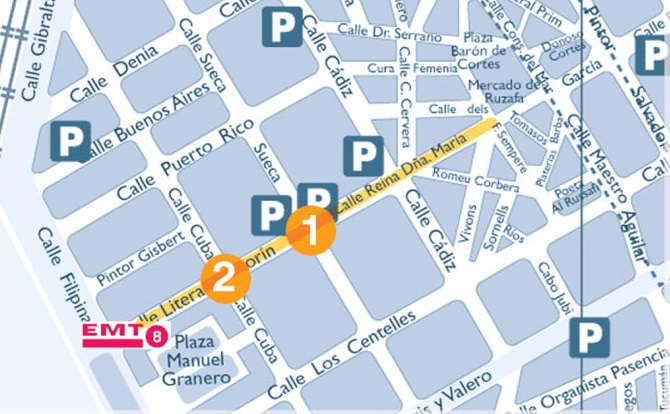
We are not going far as crossing the street, calle Literato Azorín of Ruzafa, we come to the crossroads where there are several important monuments: the Falla of Sueca and the Falla of Cuba. However, perhaps the most important thing to note is the impressive illuminations in the streets, which are another huge aspect of the festivals in Valencia, particularly the switch on of thousands of lights everyday at 8pm and 8:30pm.
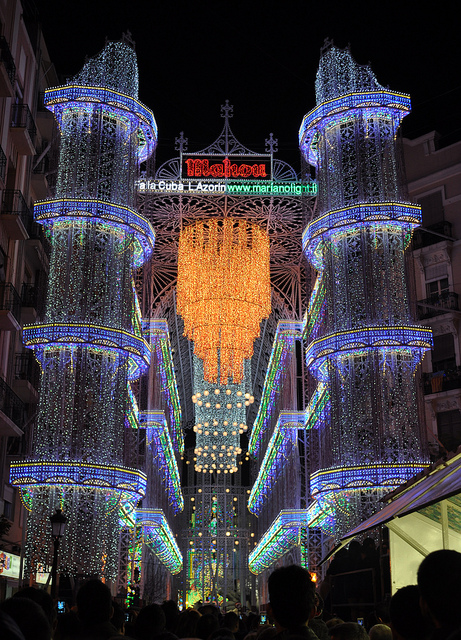
Route 5
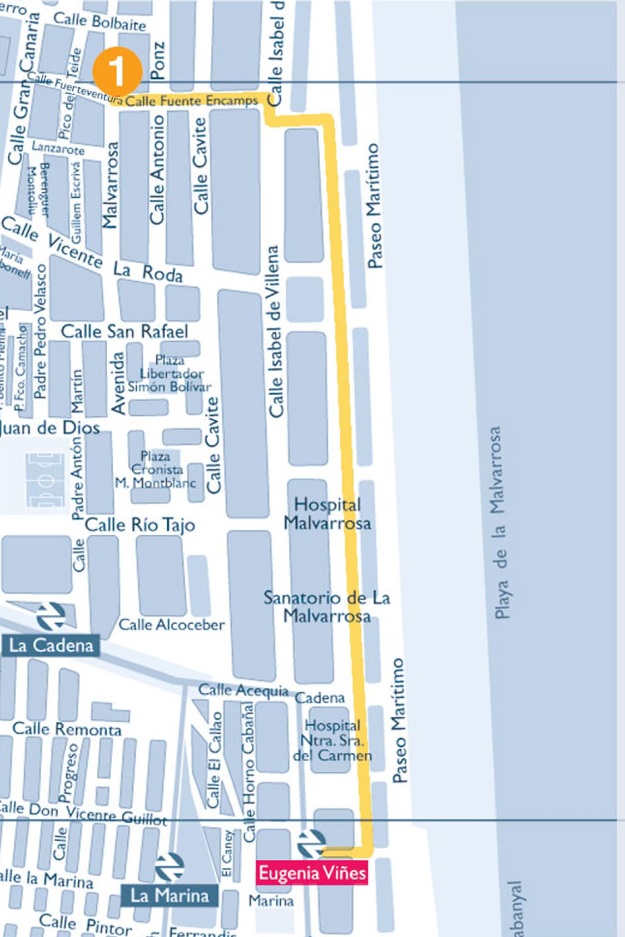
For the fifth route we move away from the hustle and the bustle to the Arenas beach and the promenade. It is worth knowing about this area if you are seeking a little peace away from the huge crowds of people during the Fallas.
So to get there, take the tram to the stop called Eugenia Viñes and once there take a wander along the promenade, looking out for the Avenida Malvarrosa – Antonio Ponz Cavite Falla.
Route 6
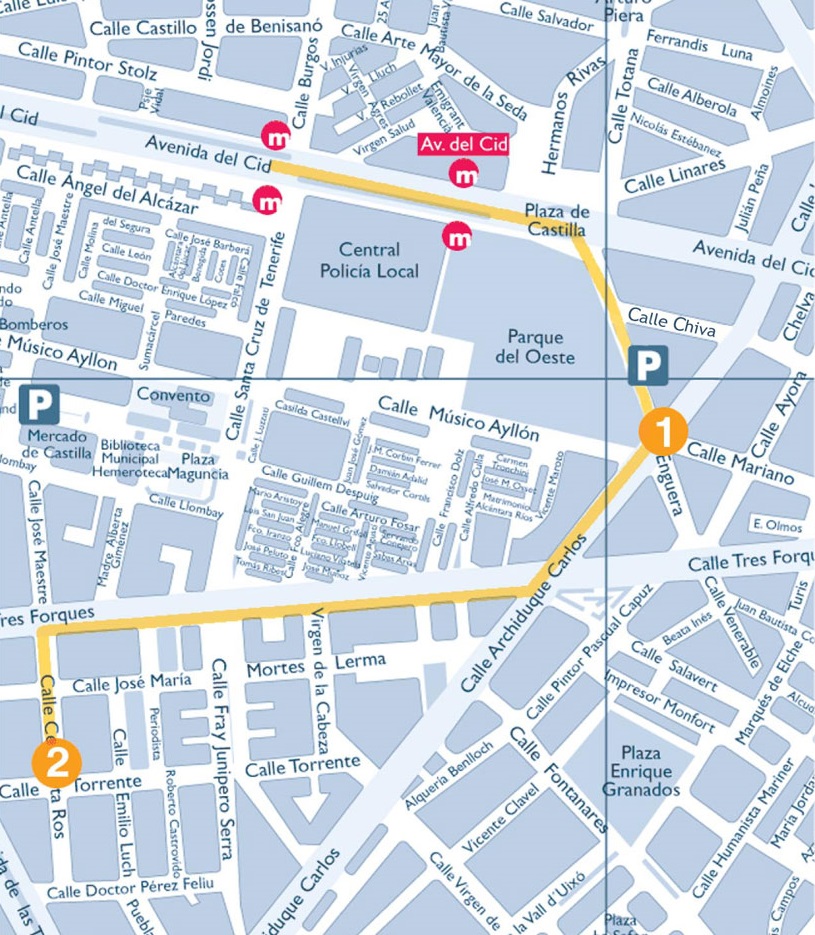
And finally, after taking line 3 on the metro and getting off at Avenida del Cid, you will come across the Archiduque Carlos – Chiva Falla, at the crossroads of these two streets, and Ceramista Ros – José María Mortes Lerma Falla, of the first category (although the smaller falla belongs to the specialised category.)
Another option is to get off at Alameda and watch the Micer Mascó – Arévalo Baca Falla Exhibition. It is also interesting here to walk along the former river bed and, if it’s the evening of 18th March at about 1:30am, watch the spectacular Nit del Foc, led this year by pyrotechnic Ricardo Caballer which illuminates the sky with impressive fireworks.
These are the main routes but without a doubt the magic of the Fallas is to get lost around Valencia, as you will always discover another monument along the way: around 350 big fallas and 350 smaller ones on display throughout the city, so the festival atmosphere is present everywhere: also the perfect excuse to really get to know the city.
And we have gone even further…
If you are coming to Valencia for the Fallas, we at Muchosol have created a “Fallas Dictionary” with the words and phrases most used during the festival and we hope that it proves useful for integrating yourself 100% into the most rooted traditions of Valencia!
*falleros = people who join in with the Fallas festival
